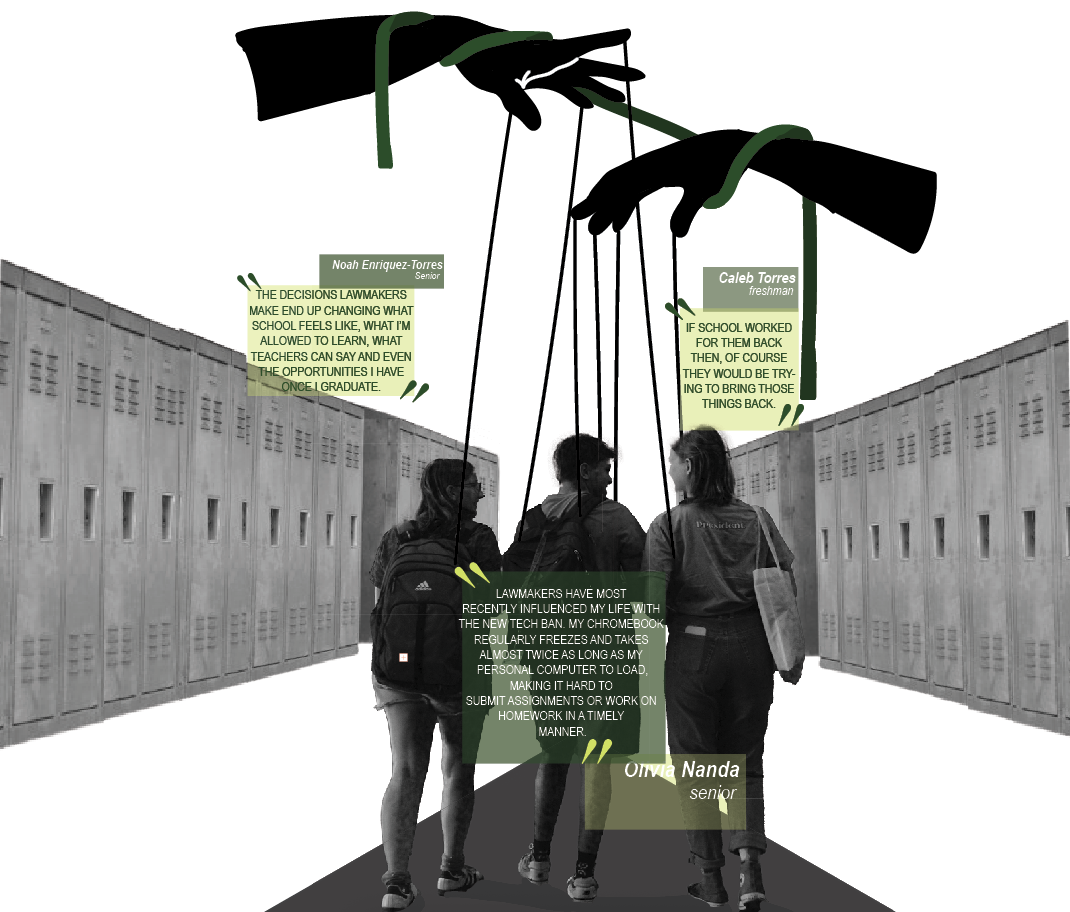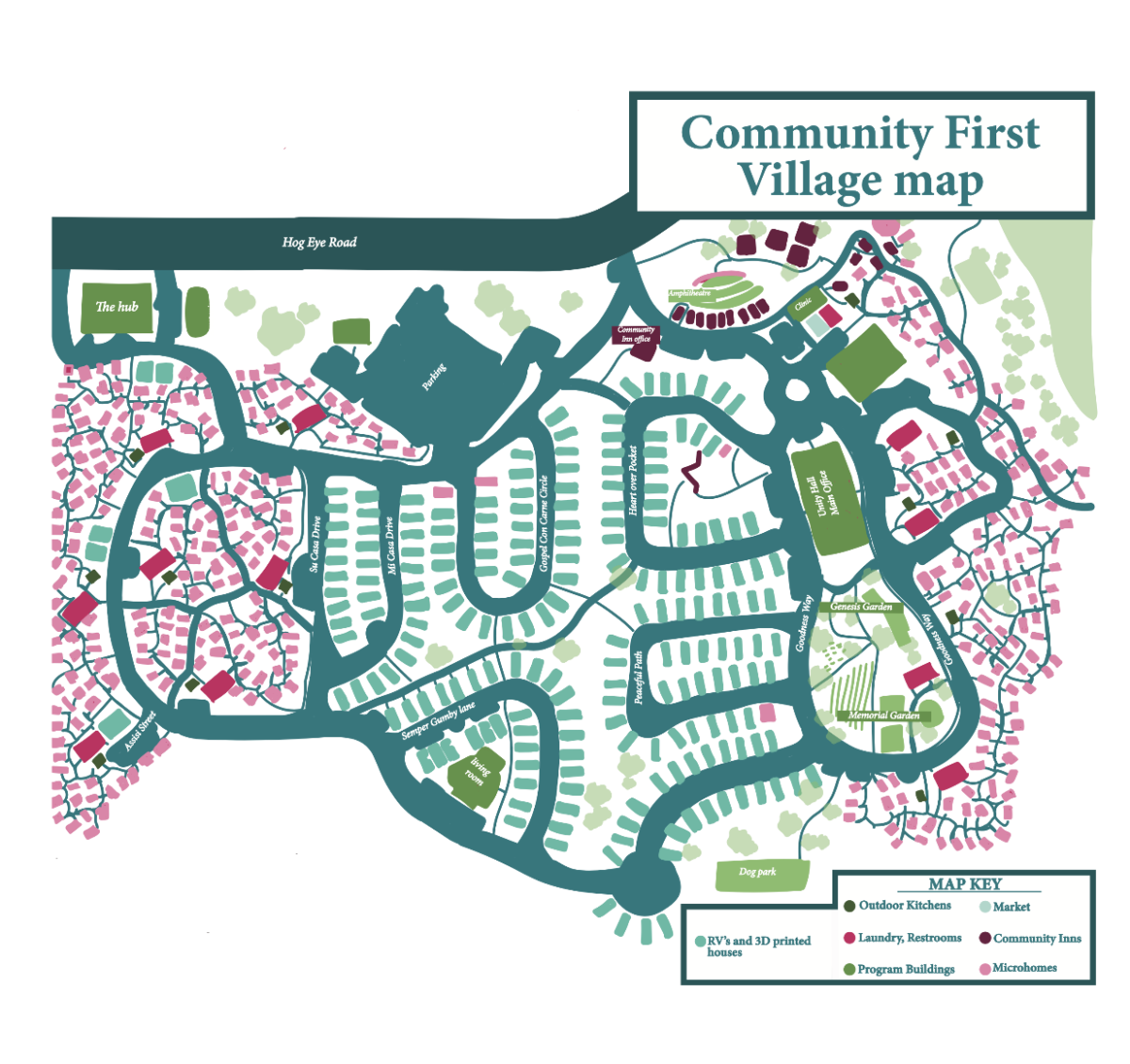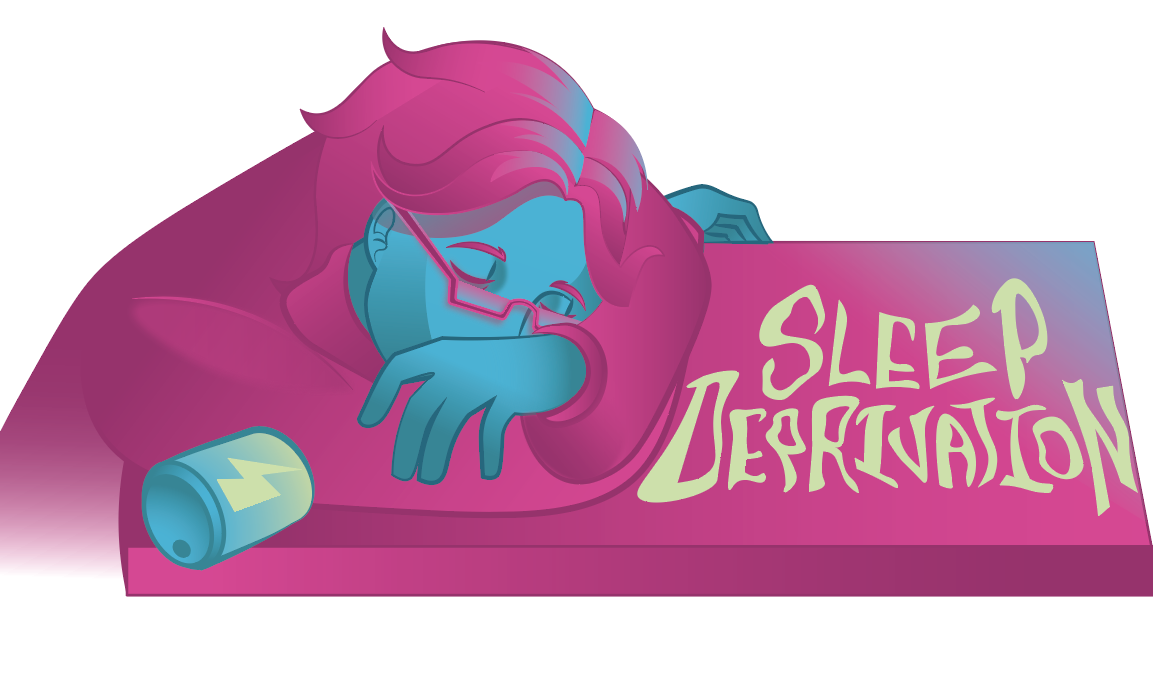The door opens, as math teacher Kelly Flickinger is teaching her lesson, revealing police officers. The class stops and stares as a student is escorted out of the room. Lesson forgotten, the question on everyone’s mind was ‘what happened?’. In this case, the student who was removed was pulled because they had made threatening statements during the passing period.
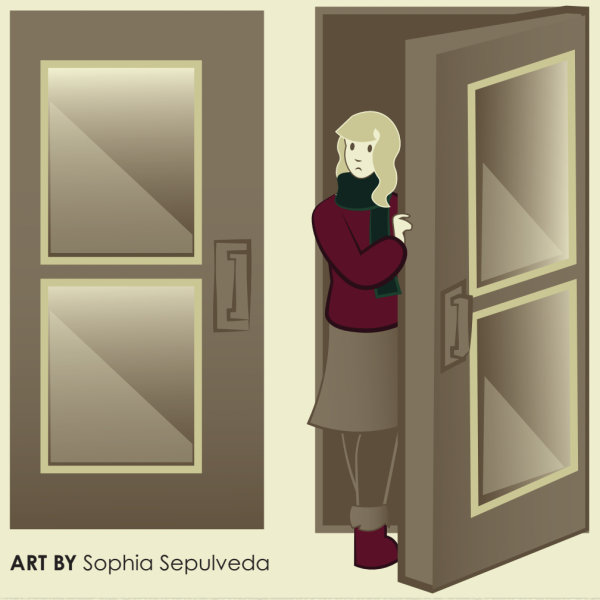
As more and more threats are posted online or spread by word of mouth each day, it becomes harder for school administrators and safety personnel to quickly and accurately assess whether or not the threats are valid. According to the Everytown website, there have been a minimum of 200 instances of gunfire in schools since the start of 2024, which is more than the recorded number in 2023. With this rise in threatening behavior on school grounds, accurate threat assessment could be more important than ever.
“I think students realize, hey, this is kind of a big deal,” Flickinger said. “This is the safety of others, this is important. I think it is important for kids to know we take this seriously. I think kids feel safe knowing that there is attention being brought to stuff, and it’s not just ignored or brushed under the rug, because that’s when unsafe things happen. More knowledge and more information is going to cause intelligence and hopefully a safer environment.”
EMERGENCY PREP AND MANAGEMENT
In 2019 the Texas Senate passed Bill 11 (TEC; 37.115) which made it a state requirement that all schools have a Safe and Supportive School Program (SSSP) team. According to AISD the SSSP team is responsible for threat assessment and determining the appropriate actions to take, and the team includes members with varied backgrounds including school administration, counseling, behavioral management, school safety/security, law enforcement, and more. One of the members of this team was former Assistant Principal Hector Munoz who has left Bowie and will work at another school.
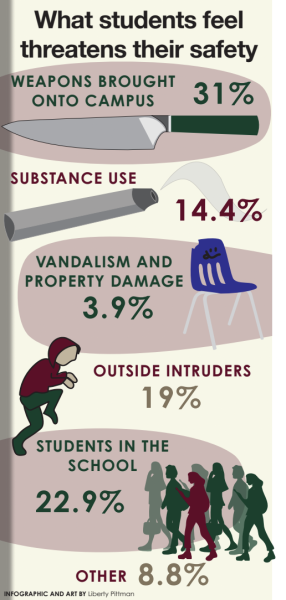
“We all have to be trained in threat assessment behaviors, and all as administrators go through that course, we have to be certified,” Munoz said. “Once a threat has been issued, we as administrators, link up and start to follow that checklist that the district gives us, and guidelines and procedures. Then we incorporate our SROs, and our counselors, and there’s a threat assessment team on campus that I’m ahead of as well. We coordinate together, and we evaluate the student and then whether they fall into one caveat or the next, it’s after that investigation.”
AISD’s emergency management system includes preparedness, response, recovery, mitigation, community engagement, and compliance. Their goal is to ensure the safety of everyone; students, staff, and the local community, in all types of emergency situations. According to a poll of 311 Bowie students, 41.2% of students feel only slightly confident about the schools ability to protect them in an emergency situation, and 26% of students feel not at all confident.
“We have systems set in place to evacuate classrooms,” Flickinger said. “We know what those are. We practice those. I don’t feel like my students would freak out and not know how to get out of the classroom. Our school does a good job at making sure that we follow the state standards and AISD standards to make sure that students know what to do in the case of an emergency.”
After threat assessment is done the campus principal and AISD administration are in charge of information distribution. According to the poll of Bowie students, 69.4% of students believe it is very important that the school clearly communicates safety issues to them. However 34.8% of students believe the school communicates safety issues somewhat poorly, and 22.3% of students believe the school communicates them very poorly.
“Threats get posted a lot more than students even realize,” Flickinger said. “It is great when students are made aware of threats immediately, and know they are being looked into by administration. However it is important to evaluate rumors before announcing there is a threat, and when students do believe rumors without further information it can make it seem like there was a threat when there wasn’t one. When threats are authentic the administrators do their best to make sure everyone has all the information they need.”
In order to prepare for potential disasters, students, teachers, and administrators participate in many drills. These include hold, secure, lockdown, evacuate, and shelter.
“We don’t do enough safety practice and we don’t do it often enough,” sophomore Liam Sullivan said. “We don’t really know certain variables. If something happened during passing periods or during lunch, we wouldn’t know what to do.”
Bowie administration uses other devices than drills to help educate students on how to stay safe, they also create lessons given to students by teachers either during class or during mandatory FIT sessions. On October 7, there was a FIT session about online safety and the warning signs of someone who may want to harm others.
“Bowie handles threats by making us go to a fit and talk about it, they do it by making us have a conference,” junior Alison Milla said. “They haven’t really been reaching out to students that much, and they haven’t shown that they care about students’ mental health. They should be making adults reachable, making teachers more reachable, and encouraging them to have a relationship with students, to really talk to them. Sometimes the teachers are the only people who the students feel safe with.”
EVERYDAY THREATS TO SAFETY
There are other problems for schools that aren’t as obvious as a threatening phone call, but still impact students. These include bullying and similar behavior. According to the National Center for Educational Statistics(NCES), in the 2021-22 school year 19.2% of students in grades 6-12 reported being bullied in school, some of the most common forms of bullying reported were being the subject of rumors, being insulted or made fun of, being pushed, tripped, shoved, or spit on, or being purposefully excluded.
![]()
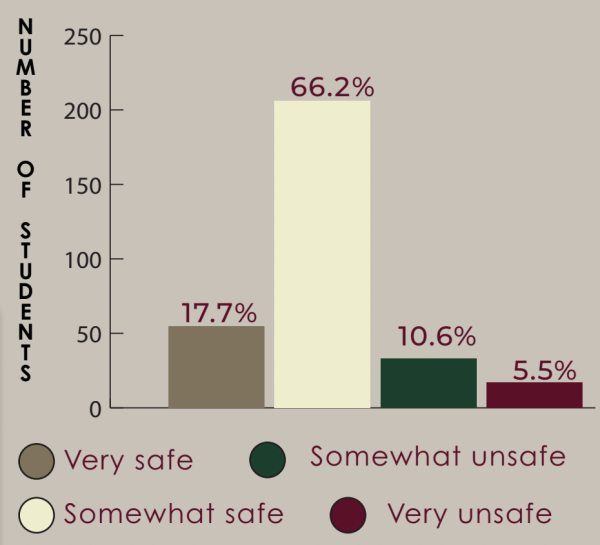
“I do believe bullying is a problem at Bowie, especially racial bullying,” Milla said. “I feel like it doesn’t really get a consequence, and students are not really scared to do it. People have been doing it on social media and many other platforms, and I feel like it hasn’t been addressed. The school doesn’t really show that they care about it, and I’m scared that if I tell them how I’m feeling, they might just make me watch a video or do some activity that’s not gonna help me in any way”
Bullying can lead to physical outbursts and violence by both the bully and the victim, which can be made worse when there are weapons present. According to the American Knife and Tool Institute, in the state of Texas a minor is allowed to own a knife, they just can’t carry them without adult consent and supervision. According to the Texas State Law Library in the state of Texas minors aren’t permitted to own firearms unless under specific circumstances. Under the AISD student code of conduct, students may not bring any weapons or intimidation weapons onto campus.
“The weapon policy that kind of makes sense, no bringing weapons, but students still do it,” Milla said. “I’ve heard of it from people bringing knives or pocket knives. I do feel like sometimes weapons can be safe because you never know what’s going to happen at school, but I also feel like students are kind of provoking something by having a weapon with them. ”
Other items prohibited by the AISD student code of conduct include drugs, alcohol, all vape products, tobacco products, and any items mimicking drugs or contraband. Although they are prohibited, Milla believes that substances are a major safety concern, and has had experiences where she feels the restrooms on campus are unusable due to people’s substance use.
“Substance use is very concerning because it happens all the time in the bathrooms,” Milla said. “We see people vaping in the bathrooms, zoning out, and just being in an unwell state. Students can bring their little pen and no one ever notices that. Sometimes they even take it out during class, and it’s very concerning how easy they can do it and how much confidence they have. It makes me concerned, because I feel like at one point I’m gonna get pressure to do it, and I really don’t want to.”
According to Cleveland Clinic vaping can lead to serious health problems such as damage to the lungs and other organs, cancer, addiction, and potential future cigarette use. Many E-cigarettes contain a pod with the liquid that is heated to create the aerosol vapor like substance which is inhaled. According to the CDC the liquid in vapes is normally a combination of water, flavoring, nicotine, cannabis, propylene glycol, or vegetable glycerin.
“Do I believe that if students come under the influence, it affects other students? Yes,” Munoz said. “If a student is under the influence, they’re not going to be able to learn. We’ve had instances on this campus in the past where students vape something not knowing what’s in the vape, and then, consequently, they have an allergic reaction or something bad happens in their organs and internally and that causes them to go to the hospital. Absolutely substances play into school safety because one, it’s illegal, two, you don’t know what’s in it, and three, we don’t know how your body is going to react to it, and how to treat it.”
CURRENT ENVIRONMENT AND POLICIES
The Bowie campus is located on 60 acres of land and contains three main buildings, the academic, athletic, and fine arts buildings, as well as portables. The main area of the school has two primary entrances, the doors in the front by the office and the bus gate in the back. There are also doors at the end of every downstairs hallway.
“Being an open campus, stuff can come in and out,” Munoz said. “Whether it’s homeless people from the Velloway that kind of trickle in, or snakes; we’ve had them. Just being so large and not being fully 100% surrounded by a fence or something like that, where there’s a one way in, one way out, that’s probably the biggest threat to safety, being an open campus and not having the capacity to kind of lock it all the way down. We could build a 20 foot fence around it, and even then, when we do that in the back, people still come around and knock it down. That’s going to cost money too, and right now we’re in a deficit.”

Bowie serves over 2,900 students as well as over 200 teachers and staff. To help ensure that everyone on campus can be identified Bowie provides ID’s to all students and staff. Staff ID’s can be scanned at the door to provide entrance into the building, while student ID’s do not have that ability, they are meant to be required for a student to use a hall pass, and can be scanned to check out books or get lunch food. The ID policy states that everyone on campus should always have their ID in clear view during school hours, and only take them off with the permission of a teacher.
“ID’s allow everybody to know whether people are supposed to be on campus or not,” Flickinger said. “When I walk into a building and I see someone who definitely doesn’t look like a student, I see that they have an AISD badge on, so don’t have to stress out. I know that they’re supposed to be here. For our students themselves, I think it creates familiarity. It allows me to kind of feel connected to students that I wouldn’t have in my classroom, which is probably silly for other people, but for me, it’s about culture, that’s what makes me feel safe.”
The AISD student success guide, Code of Conduct for 2024-25 is 65 pages and outlines student and district rights and responsibilities, intervention strategies, and lists behaviors or possessions that could result in disciplinary actions, as well as what those disciplinary actions would be. The Bowie Baseline Expectations guide hits some simplified main priorities of the campus which are phone-free learning, limited hall passes, cooperation with reasonable request, and to always wear ID’s.
“There’s not really much we can do to change the times, so we might as well change our rules and set standards to make sure bad things don’t happen,” freshman Baz Del Negro said. “100% it needs to be way different, needs to be way better. We have a lot of systems that just don’t work, and a lot of contradictory rules that are just confusing, and it could be a lot simpler for teachers and students.”
The environment students are in can affect how safe they feel. According to EHS Insight the best ways to ensure students feel safe in the classroom is to set clear rules and boundaries, encourage group activities, show respect, keep people calm, and adapt to individual students.
“I feel safe, and I think a lot of it has to do with the environment that I create in my classroom,” Flickinger said. “I feel safe with my students, so I feel safe in my environment. I think the students in my class feel loved and appreciated, and I feel the same way from them. That makes me feel safe, at least in my small space. When I’m out in the hallways and I notice certain things, I think those are the times that I would not feel safe, and I could see why a student would feel unsafe.”
The AISD police department stations two school resource officers (SROs) at every high school in the district, there are 43 SROs out of a total 82 full-time AISD police officers.
“I think some students might see campus security as this presence of authority, which is kind of like administration, but I think it’s a different feeling of authority,” Flickinger said. “I know that security is needed, but I think there’s moments when security is around, I don’t necessarily feel safer. It kind of makes me a little bit anxious. It definitely makes me feel more aware and heightened, which obviously could help towards safety. I think I would prefer seeing those people actually doing something like checking the bathroom instead of just, kind of just walking the hallway, going into places where we feel like there are issues.”

If students would like to report a safety issue at the school whether something threatening them or someone else they can talk to their counselor, AP, teacher, or any adult on campus they feel comfortable talking to. There are also other resources for students like AISD’s Let’s Talk reporting system which is anonymous, or the QR codes posted outside bathrooms around the Bowie campus.
“Teachers are the first line of defense, god forbid, someone comes through the door and wants to hurt us, I’m the first person that’s going to be there to stop them,” Munoz said. “As teachers, we model for our students what’s right and wrong. We should all be wearing our ID and should be talking to students when they walk in, saying good morning or good afternoon. If you feel like you can trust me to tell me something as an adult, you should also feel that I’m going to follow through with reporting that to the correct authorities, whether it’s the SROs, the nurse, AP’s, etc, so that we can make sure that all parties are safe and have a means to cope with whatever they’re going through.”





